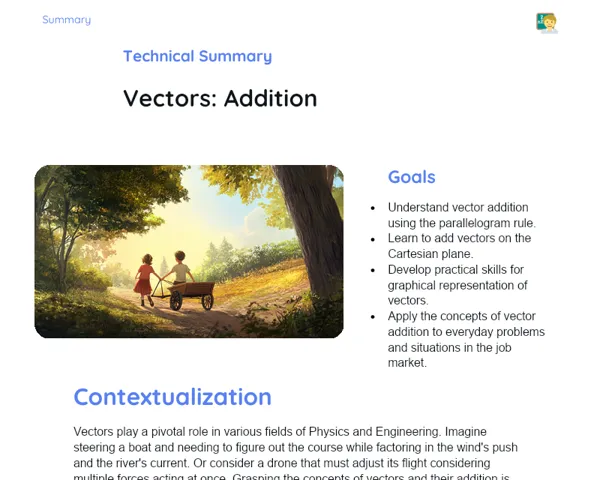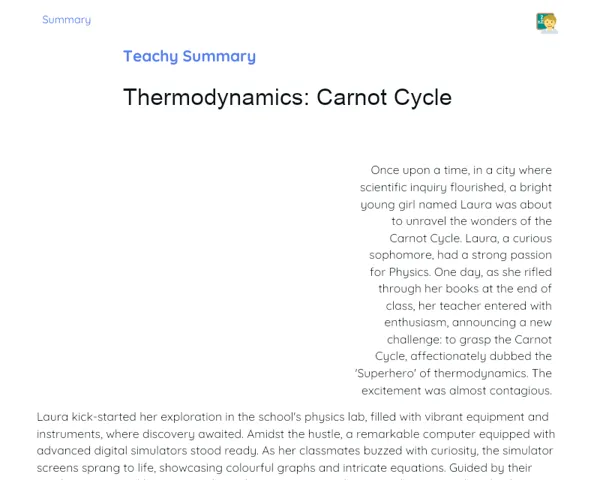Summary Tradisional | Electricity: Electric Charge
Contextualization
Electricity is a vital part of our everyday lives in India. It's essential for powering a variety of gadgets, from mobile phones to laptops, and it's also crucial for lighting up our homes and keeping them warm. To truly understand how electricity works, we need to start with the concept of electric charge, which is the foundation of all electrical phenomena. Electric charge is a fundamental property found in subatomic particles like protons and electrons, influencing how they interact with each other electromagnetically.
If we take a step back in history, the ancient Greeks were among the first to discover something about electricity. They noticed that when amber was rubbed with fur, it gained the ability to attract small bits of straw, a phenomenon we now refer to as static electricity. This observation played a vital role in the evolution of electrical science. The term 'electricity' itself comes from the Greek word 'ēlektron,' meaning amber. By grasping the essence of electric charge and its behavior, we can understand the workings of electricity and how we can harness it for various practical uses.
To Remember!
Definition of Electric Charge
Electric charge is a basic property of subatomic particles that dictates how they interact through electromagnetic forces. There are two types of electric charges: positive and negative. Particles with opposite charges attract one another, while identical charges push each other away.
Electric charge is a fundamental trait of particles like protons and electrons. Protons, which are found in the core of atoms, possess a positive charge, while electrons, which revolve around the nucleus, hold a negative charge. Neutrons, also present in the nucleus, carry no electric charge.
In the International System of Units (SI), electric charge is measured in Coulombs (C). The charge of a single electron is about -1.6 x 10^-19 C. Though this figure seems minuscule, when amassed in large quantities, electric charges can create significant forces that lead to observable electrical phenomena.
-
Electric charge is a basic property of subatomic particles.
-
There are two types of electric charges: positive (protons) and negative (electrons).
-
In SI, electric charge is measured in Coulombs (C).
Unit of Electric Charge
In the International System of Units (SI), the charge is measured in Coulombs (C). This unit is named after Charles-Augustin de Coulomb, a French scientist whose work was pivotal in the study of electrical and magnetic forces.
One Coulomb corresponds to the amount of charge carried by a current of one ampere flowing for one second. To put this into perspective, the charge of a single electron is around -1.6 x 10^-19 C. Hence, one Coulomb is equivalent to approximately 6.25 x 10^18 electrons.
Grasping the unit of electric charge is essential for calculating and measuring the charge in various objects and systems, paving the way for practical applications of electrical concepts across diverse fields, including physics and engineering.
-
In SI, electric charge is measured in Coulombs (C).
-
One Coulomb represents the charge carried by a current of one ampere for one second.
-
The charge of an electron is roughly -1.6 x 10^-19 C.
Principle of Conservation of Electric Charge
The principle of conservation of electric charge asserts that in a closed system, the total amount of electric charge stays constant. Simply put, electric charge cannot be created or destroyed; it can only be transferred from one body to another.
This principle is key for understanding how electrification happens. For example, when two objects are rubbed together, electrons move from one to the other, resulting in one object carrying an excess of negative charge while the other has less. Nonetheless, the total charge within the system remains unchanged.
The principle of charge conservation is one of the foundational laws of physics and holds true in all scenarios—from everyday experiences with static electricity to intricate interactions at atomic and subatomic levels.
-
The total electric charge in a closed system remains constant.
-
Electric charge cannot be created or destroyed; it can only be transferred.
-
This principle is vital for understanding electrification processes.
Transfer of Electric Charge
The transfer of electric charge takes place during electrification processes, which can occur through friction, contact, or induction. In all these cases, only electrons (negative charges) move from one material to another while protons stay fixed in the atomic nucleus.
In friction electrification, two materials rubbed against each other result in shifts of electrons from one to the other. A familiar example is when a plastic comb is run through hair, allowing the comb to collect negative charge from the hair.
In contact electrification, a charged object touches a neutral one, sharing part of its charge. In induction electrification, a charged object approaches a neutral object, prompting a rearrangement of charges within the neutral object without any physical contact.
-
Electric charge can be transferred through friction, contact, or induction.
-
Only electrons are transferred during electrification.
-
Examples include rubbing a comb in hair (friction) and touching a charged object to a neutral one (contact).
Key Terms
-
Electric Charge: A fundamental property of subatomic particles that determines their electromagnetic interactions.
-
Coulomb: The unit of measure for electric charge in the International System (SI).
-
Principle of Conservation of Charge: States that the total amount of electric charge in a closed system remains constant.
-
Electrification by Friction: A method for transferring electric charge through the friction between two materials.
-
Electrification by Contact: A method for transferring electric charge through direct contact between a charged object and a neutral object.
-
Electrification by Induction: The charge redistribution within a neutral object due to the proximity of a charged object without direct contact.
-
Electron: A subatomic particle with a negative electric charge.
-
Proton: A subatomic particle carrying a positive electric charge.
Important Conclusions
In this lesson, we dove deep into the concept of electric charge, an essential property of subatomic particles that influences their electromagnetic interactions. We learned there are two main types of electric charges: positive and negative, and that in the SI system, the unit for measuring electric charge is the Coulomb (C). We also explored the principle of conservation of electric charge, which teaches us that the total charge in a closed system remains steady, focusing on how charge transfer predominantly involves electrons.
These concepts are crucial for understanding the electrical phenomena we encounter in our daily lives—from static cling to how our gadgets function. The processes of electrification by friction, contact, and induction help explain how objects develop electric charges, with relatable instances such as rubbing a comb in our hair to visualize these processes.
Electric charge is a central theme in physics with wide-ranging practical applications. The insights gained from this lesson provide a solid foundation for delving deeper into electromagnetism and related fields. I encourage everyone to further explore these topics, as electricity is integral to our modern existence and mastering it can unlock numerous scientific and technological prospects.
Study Tips
-
Review the basic concepts of electric charge and take detailed notes for better retention.
-
Practice calculating electric charge through various examples and real-life applications.
-
Conduct research on electrification processes through friction, contact, and induction, and watch related demonstrations or experiments.



